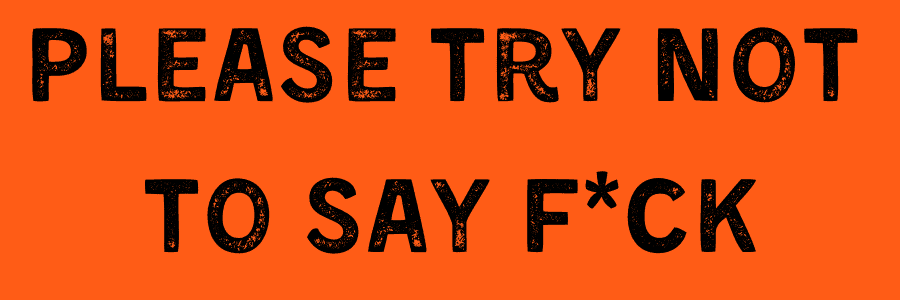
Please Try Not to Say F*ck
I hate driving in the suburbs. I especially hate driving in Highlands Ranch, CO, but many years ago, I did it anyway to attend a friend’s party. My children were with me, nestled in the back seat—Dylan, age 6, and Maya, age 4.
I’m also a very expressive person, and my children were well aware how frustrated I became when driving suburban roadways.
I’m a New York City girl who went to college in Washington, D.C.
I like a nice, clear grid with numbered avenues and alphabetized streets. I’ve no patience for suburban circles, cul-de-sacs, and dead-ends.
In the Denver area in the early 2000s, even a 4-year-old could see when the shift from city to suburbs occurred. The mature trees that lined walkable residential sidewalks in the city morphed to saplings planted on medians surrounded by multi-lane roadways.
My daughter, Maya perceived the change in landscape. And aware of the pending peril to my mental state, she said, “Uh oh, Mama! We’re in the suburbs! Please try not to say ‘fuck.’”
And I’m writing this now to say: I’m not the only one who could take a lesson from my 4-year-old daughter.
Authors also should take heed.
Back in 2016, Mark Manson’s The Subtle Art of Not Giving A F*ck hit the shelves and the New York Times bestsellers list. Its success kicked off a F*ck title frenzy that took an interesting taboo-breaking book concept and copied it over and over again.
I listened to Manson’s book on audio, and found it entertaining with some good life-lesson value in it. However, by the time I got The Life Changing Magic of Not Giving A F*ck by Sarah Knight, my ear was so tired of hearing “f*ck,” I couldn’t make it past the first chapter.
I’m not dissing Knight for her work. I checked, and both books have a nearly equal proportion of pages that contain the word: f*ck—about 23% and 25% respectively.
I simply had no more f*cks to give for books about “Giving a F*ck.”
With every subsequent book, the trend became more tiresome. The naughty thrill of using swear words in a book title and throughout the manuscript waned, until finally, the trend ended—we hope, never to be seen again.
So, how should we use cuss words now, in the post-f*ck revolution world of book writing?
Let’s look at when and why it still can be effective, and when and why it isn’t.
Cuss words, especially the F-bomb, work in a funny way. If selected strategically, they can pack the perfect punch. But used as a lazy alternative to a clever word, they will bore your readers and undermine your credibility.
The issue with cussing anywhere, but especially in books, is that if you overuse swear words, then you lose all the impact.
It also shows a lack of imagination.
You know the saying “A picture’s worth 1,000 words”?
Well, so is the right word or phrase.
The English language is rich with excellent descriptive words you can use to convey a clear, definitive image for your reader.
And sure, sometimes the best word to use is the f-word, but it’s rare.
So, before you drop the F-bomb, consider deeply the meaning you are trying to convey.
Ask yourself, “Is this really the best word here? Do I need to use this word to express the essence of what I want to communicate?”
Dig deep into your vocabulary. Open a Thesaurus. Use your f*cking imagination! 😉
The Bottom Line is this:
If you’re thinking of dropping the F-bomb in your manuscript, take a moment to reflect on it first. More often than not, you’ll find a better word sitting right at the tip of your pen.
For more writing tips, check out my book: How to Write A Book That Sells YOU
